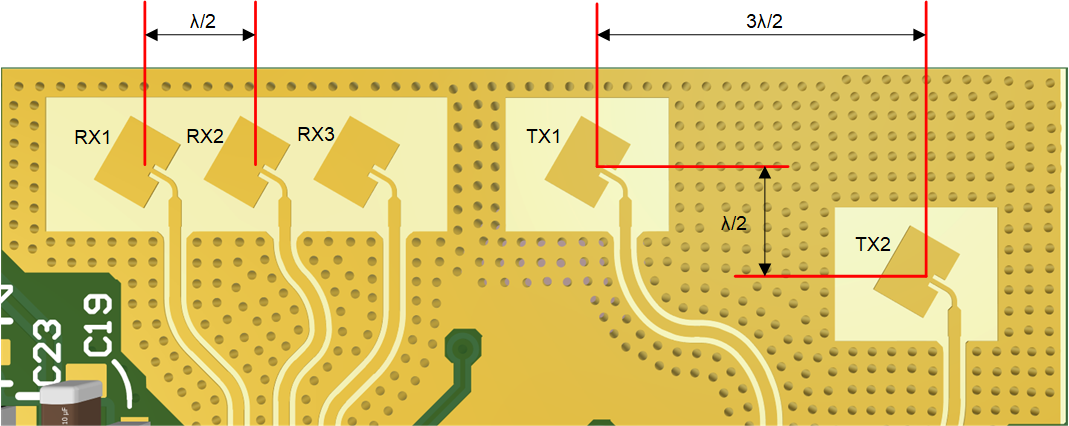TIDUFA8 November 2024
- 1
- Description
- Resources
- Features
- Applications
- 6
- 1System Description
- 2System Overview
- 3System Design Theory
- 4Link Budget
- 5Hardware, Software, Testing Requirements and Test Results
- 6Design and Documentation Support
- 7About the Authors
3.2.1 2D Antenna Array With 3D Detection Capability
The first variant has one Tx antenna placed λ/2 below the other TX antenna in the elevation plane, as shown in Figure 3-18. This antenna geometry has a two line, six element virtual antenna array, with six elements in the azimuth plane and two elements on the elevation plane as shown in Figure 3-19. This antenna variant is capable of 3-dimension detection: the azimuth, elevation and distance.

Figure 3-18 2D Antenna Patch Array Geometry
Figure 3-19 shows the geometry of the virtual antenna array with each index depicting multiplication factor for λ/2. Position 0, 1, and 2 represents placement of virtual antenna originated from combination of all 3 Rx (Rx1, Rx2, Rx3) and Tx1. Position 3, 4, and 5 represents placement of virtual antenna originated from combination of all 3 Rx (Rx1, Rx2, Rx3) and Tx2.

Figure 3-19 2D Antenna - Virtual Array
The virtual antenna forms a two dimensional array with six elements in the azimuth and two elements in the elevation. The six elements in the azimuth direction, like the 1D antenna variant, yields an angular resolution of 19 degrees across azimuth. However, the 2D antenna variant having two elements in the elevation direction, unlike the 1D antenna variant, yields an angular resolution of 58 degrees across elevation. This enables the 2D antenna variant of the reference design.